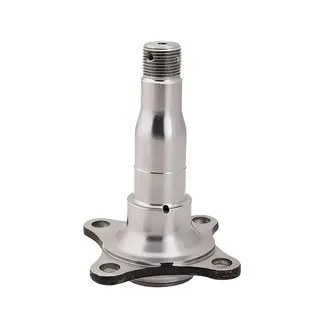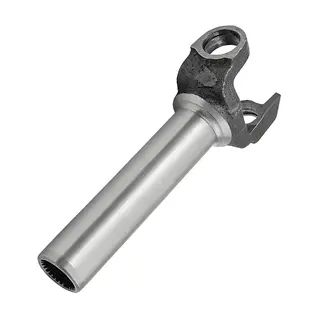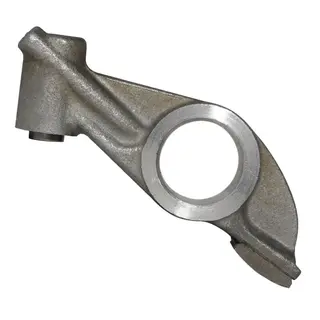In modern industrial manufacturing, titanium and titanium alloys are widely applied in aerospace, automotive, medical, and other fields due to their excellent properties, such as high strength, low density, good corrosion resistance, and superior high-temperature performance. However, to fully utilize the advantages of titanium alloys, the forging deformation process is a key link. This article will delve into the objectives, process characteristics, and optimization strategies of titanium and titanium alloy forging deformation, helping readers gain a comprehensive understanding of this complex and important manufacturing process.
The main objectives of titanium and titanium alloy forging deformation are:
In industrial production, whether for large aerospace structural components or small medical device parts, precise shape and dimensions are required. Through forging deformation, titanium alloy billets can be processed into complex shapes and precise dimensions that meet design requirements, thereby satisfying the demands of various application scenarios.
In addition to shape and size, the microstructure and performance of titanium alloy forgings are equally critical. The microstructure formed during the forging deformation process directly affects the mechanical properties, corrosion resistance, and service life of the forgings. Therefore, ensuring that the microstructure and performance meet design requirements is one of the core goals of the forging process.
The quality of titanium alloy forgings is mainly determined by the forging process. Defective microstructures formed during the forging deformation process are difficult to improve through subsequent heat treatment. Therefore, developing a reasonable forging process is the key to ensuring the quality of titanium alloy forgings.
The forging process characteristics of titanium alloys mainly include the following three aspects.
High deformation resistance is one of the significant characteristics of titanium alloy forging. Compared with Cr-Ni-Mo structural steel, under the same forging deformation temperature, titanium alloys exhibit obviously higher deformation resistance, which rapidly increases as the forging temperature decreases. This means that even a slight decrease in forging temperature will significantly increase the deformation resistance of titanium alloys. Therefore, selecting a reasonable forging temperature is the primary task in titanium alloy forging.
Poor thermal conductivity is another notable characteristic of titanium alloys. Due to poor thermal conductivity, after the billet is heated, the surface cools faster than the interior. If operations are not properly managed, it can cause a large temperature difference between the interior and exterior of the billet, exacerbating uneven deformation during forging and even causing cracking. This seriously affects the service life and reliability of titanium alloy forgings. Therefore, fully preheating the tools in direct contact with titanium alloy billets, such as dies and tongs, is very important in titanium alloy forging production.
The high viscosity and poor flowability of titanium alloys require enhanced lubrication during forging. Otherwise, die sticking and material backflow may occur, and increased friction can significantly raise deformation resistance, sometimes even tearing the forging. Experimental results show that without lubricants, the friction coefficient of titanium alloy during high-temperature upsetting is 0.5, whereas with glass lubricant, it can be reduced to 0.04–0.06. Therefore, using proper lubricants is an important measure to ensure the quality of titanium alloy forgings.
Like other metal materials, titanium alloy parts requiring high reliability are generally manufactured through forging processes. Common forging methods for titanium alloys include open-die forging, hot die forging, and special forging.
Open-die forging is a method that uses external force to deform titanium alloy billets between an upper and lower anvil, obtaining forgings with certain microstructure, performance, shape, and dimensions. It is especially suitable for producing large or extra-large forgings in heavy machinery. The degree of deformation is an important process parameter in open-die forging and is a necessary condition for refining the microstructure of titanium alloys. When the deformation degree is less than 30%, the casting structure cannot be broken or is only slightly broken; when the deformation degree exceeds 30%, the microstructure can be significantly refined. Generally, to refine coarse needle-like structures into equiaxed microstructure and obtain titanium alloy forgings with good microstructure, the forging temperature should be within the α+β phase region, and the deformation degree should exceed 60%.
Hot die forging is a method that uses external force to deform titanium alloy billets within die cavities, obtaining forgings with certain microstructure, performance, shape, and higher dimensional accuracy. It is suitable for producing titanium alloy forgings with relatively complex structures, high dimensional accuracy, and small machining allowance. To ensure that the microstructure and performance of titanium alloy forgings meet design specifications, hot die forging is commonly used. Hot die forging is divided into ordinary die forging, isothermal forging, and superplastic forging.
Ordinary Die Forging: Used for producing simple-shaped titanium alloy forgings. The maximum height-to-width ratio of ribs for ordinary forgings is 6:1, and for precision forgings is 15:1.
Isothermal Forging: Used for producing complex-shaped titanium alloy forgings with high dimensional accuracy. During isothermal forging, the maximum rib height-to-width ratio is 23:1, minimum rib width is 2.5 mm, and minimum web thickness is 2.0 mm.
Superplastic Forging: Used for producing extremely complex titanium alloy forgings with large cross-section variation and high performance requirements. During superplastic forging, the maximum rib height-to-width ratio is 23:1, minimum rib width is 2.5 mm, and minimum web thickness is 2.0 mm.
Special forging is a method that deforms titanium alloy billets using dedicated equipment, obtaining forgings with certain microstructure, performance, shape, and dimensions. Special forging has higher production efficiency and is suitable for mass-producing titanium alloy forgings, such as screws produced on upsetting or thread-rolling machines, which greatly increases production efficiency. However, a special forging machine usually produces only one type of forging, which has certain limitations.
Forging deformation temperature, deformation degree, and deformation speed are key control parameters in titanium alloy die forging process design.
From the perspective of reducing energy consumption and fully utilizing titanium alloy plasticity, the higher the initial forging temperature, the better. For example, the flow stress of Ti6Al4V alloy during hot die forging is 1200 MPa, during isothermal forging is 150 MPa, and during superplastic forging is 40 MPa. Under a forging temperature of 980°C and deformation speed of 1 mm/s, the minimum wall thickness of a Ti6Al4V nasal ring in isothermal forging is 6.3 mm; when the deformation speed is 0.04 mm/s, the wall thickness at the same cross-section is 1.52–1.87 mm. However, if the initial forging temperature exceeds the β-phase transition temperature, due to severe β grain growth, Widmanstätten structures may form, causing low room-temperature plasticity, a phenomenon known as β-brittleness. To avoid β-brittleness in α+β alloys and achieve excellent overall performance, forging should occur below the β-phase transition temperature. For β alloys, the initial forging temperature is higher than the β-phase transition temperature, but to minimize β-brittleness, it should not be too high.
The deformation degree is an important factor determining the performance of titanium alloy forgings. Experiments show that when the deformation degree is 2%–10%, the grains are very coarse; above this range, higher deformation refines the grains. When deformation exceeds 85%, grains become coarse again due to agglomerated recrystallization. Increasing deformation also reduces anisotropy during forging. For example, at 800–1000°C and 75%–80% deformation, anisotropy in TA2 alloy microstructure reaches a minimum; at around 90% deformation, anisotropy in TA6 and TC6 alloys reaches a minimum.
During titanium alloy forging, both recrystallization and work hardening occur. Increasing deformation speed can sometimes prevent sufficient recrystallization, reducing plasticity and increasing deformation resistance. Therefore, the deformation degree per stroke should be large, and the deformation speed should not be too high. For common forging equipment, press deformation speed is relatively slow, making presses suitable for titanium alloy forging to reduce deformation resistance, lower energy consumption, and improve plasticity for better die filling.
Forging deformation of titanium and titanium alloys is a complex and precise process. Its purpose is to obtain forgings that meet design requirements in shape and dimensions while ensuring microstructure and performance meet technical specifications. The process characteristics of titanium alloys, high deformation resistance, poor thermal conductivity, high viscosity, and poor flowability, pose higher requirements for forging process design. By reasonably selecting forging temperature, deformation degree, and deformation speed, and using appropriate forging methods, the quality and performance of titanium alloy forgings can be effectively improved. In actual production, the optimal forging process should be chosen based on specific application requirements and titanium alloy characteristics to ensure the reliability and service life of titanium alloy forgings under various complex working conditions.



